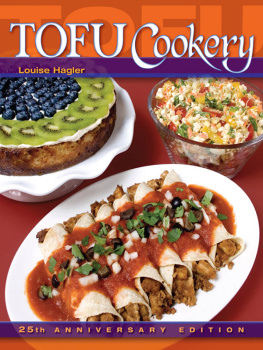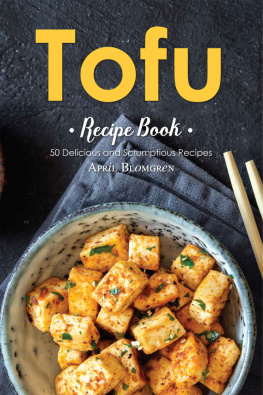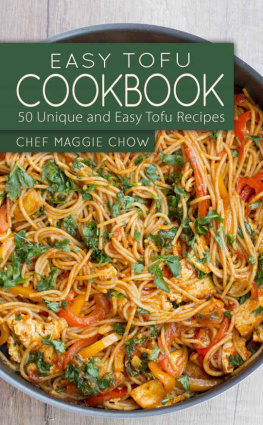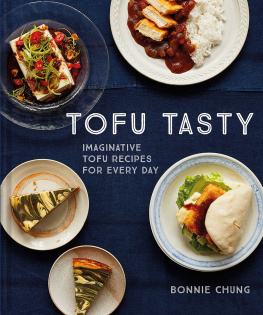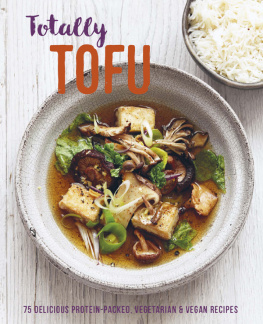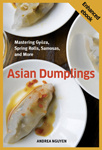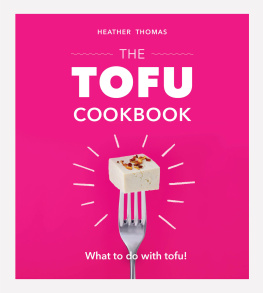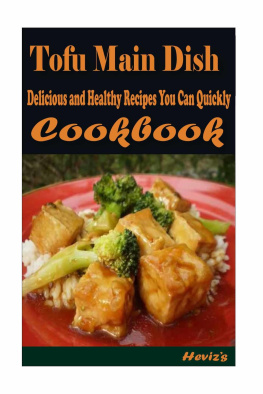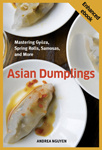About the Author LOUISE HAGLER is a pioneer in creating vegan cuisine with tofu and other soyfoods to satisfy the Western palate. For over thirty years, she has continued to create vegan cookbooks that present a wide variety of tasty, easy-to-prepare, familiar dishes incorporating soyfoods of all kinds. Besides being a cookbook author, Louise is a mother and grandmother, food writer, book production supervisor, food stylist, soy technician, nutrition educator, and traveling culinary teacher. In her cooking classes, Louise showcases her quick and easy recipes, revealing special cooking tips and secrets of success for this healthful cuisine.
The class menus demonstrate the amazing versatility of all kinds of soyfoods prepared in ways that are warmly welcomed into daily menus. Louise also works with Plenty International, a not-for-profit alternative relief and development organization, as a soy technician and nutrition educator in Mexico and Guatemala. These projects introduce soyfoods as alternative protein for undernourished populations, and also seek to reintroduce native protein sources and teach organic, sustainable farming and gardening for food security. Visit www.plenty.org/index.htm for more information. Other book titles from Louise include Miso Cookery, Soyfoods Cookery, Lighten Up! with Louise Hagler, Meatless Burgers, Tofu Quick & Easy, and The Farm Vegetarian Cookbook.
Introducing Tofu S o much has come to light about the world of soybeans since this book was first put together as a project of The Farm, a vegan intentional community located in Tennessee, in the early 1970s. As of this writing, thousands of studies have been done on the various nutritional and health factors related to the soybean, the overwhelming majority with positive conclusions.
Tofu is a soyfood that has been consumed for centuries in Asian cultures, which have some of the best statistics in the world for low rates of cancer and heart disease. Soyfoods in general, and tofu in particular, are not magic remedies for any malady, nor can they alone correct an otherwise poor diet. But for most healthy people, these power-packed foods are well worth adding to their menu. With the exception of those with soy allergies, all people can benefit from two to three daily servings of soyfoods, including tofu. The recipes in this book will make that easy to do! Today tofu hardly needs any introduction. It has truly become a household word.
Many have paid tribute to this noble soyfood, despite its being the brunt of a number of jokes in the media. One fact remains: tofu is one of the most versatile protein foods in the world. Tofu, also known as bean curd, is made by curding mild, white soymilk. It is high in protein and relatively low in calories, fat, and carbohydrates. Tofu is an economical source of protein and, like all plant foods, contains no cholesterol. Tofu originated in Asia hundreds of years ago, where it still can be found in many forms not generally seen or available in the Western hemisphere.
The recipes in this book incorporate the use of tofu in ways that are recognizable to the Western palate. These are only a sampling of the culinary delights possible with tofu, ranging from the familiar to the international and exotic. Tofu can be prepared in a variety of ways and incorporated into main dishes, breads, desserts, soups, salads, salad dressings, and dips, sufficient for any meal, snack, or party. With its growing popularity, tofu has become easy to find in supermarkets everywhere. It can also be found in the growing number of Asian food shops and natural food stores. Small tofu shops and larger processing plants have sprouted up around the country.
If you become a serious tofu chef or use large amounts of tofu, you might want to make arrangements to get it right from the source; alternatively, you can make your own tofu at home. Tofu is an excellent food for babies, children, and the elderly since it is a wholesome, complete vegetable protein that is very easy to digest. It is also a good food for sensitive stomachs. For babies, tofu can be processed in a blender or ground in a baby-food grinder with your choice of flavorings, fruits, or vegetables. Higher protein foods like tofu are generally introduced to babies when they are seven to eight months of age, after they have first been introduced to baby cereals, fruits, and vegetables. Older babies and young children enjoy small cubes of plain tofu for snacking.
The nutritional content of tofu will vary slightly depending on what variety of bean was used and what method was used to process it, but all tofu is rich in high-quality protein and is a good source of B vitamins. When tofu is curded with calcium sulfate, it also becomes a good source of calcium. Tofu is low in sodium, making it an excellent food choice for those on sodium-restricted diets. TABLE 1 Nutritional analysis for pound (113.5 grams) tofu, traditionally prepared with calcium sulfate and magnesium chloride (nigari)

